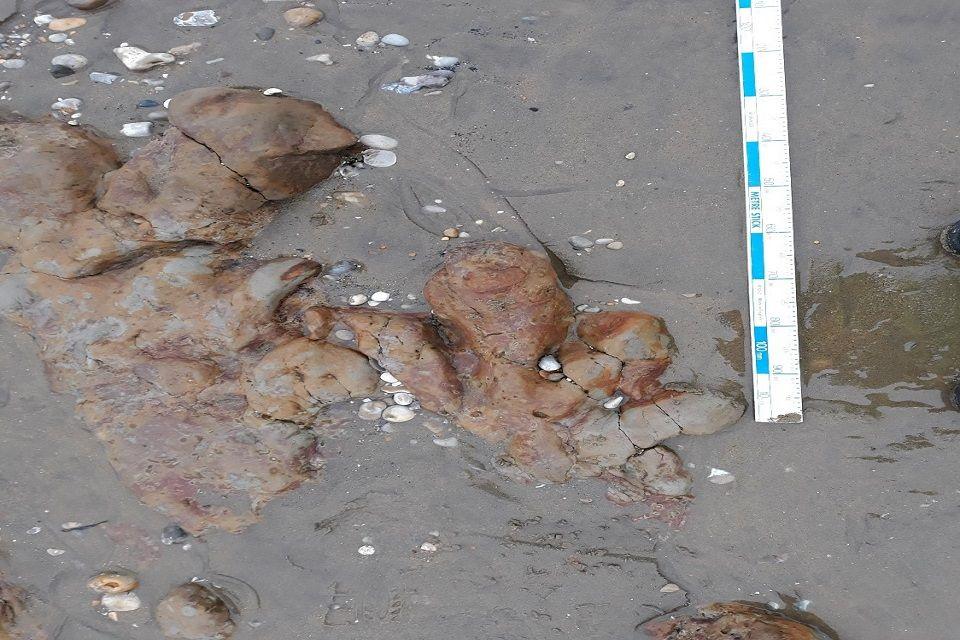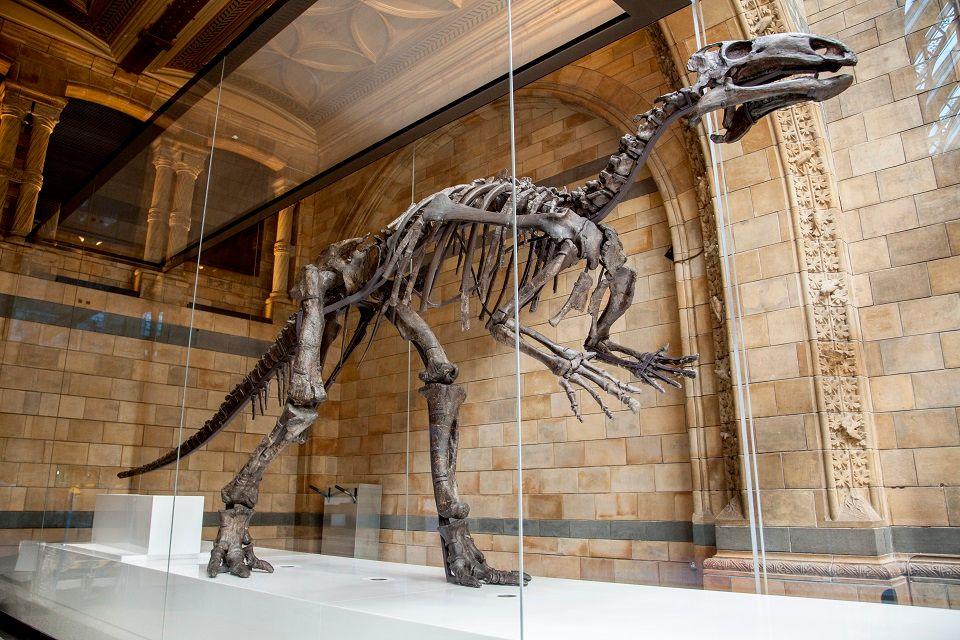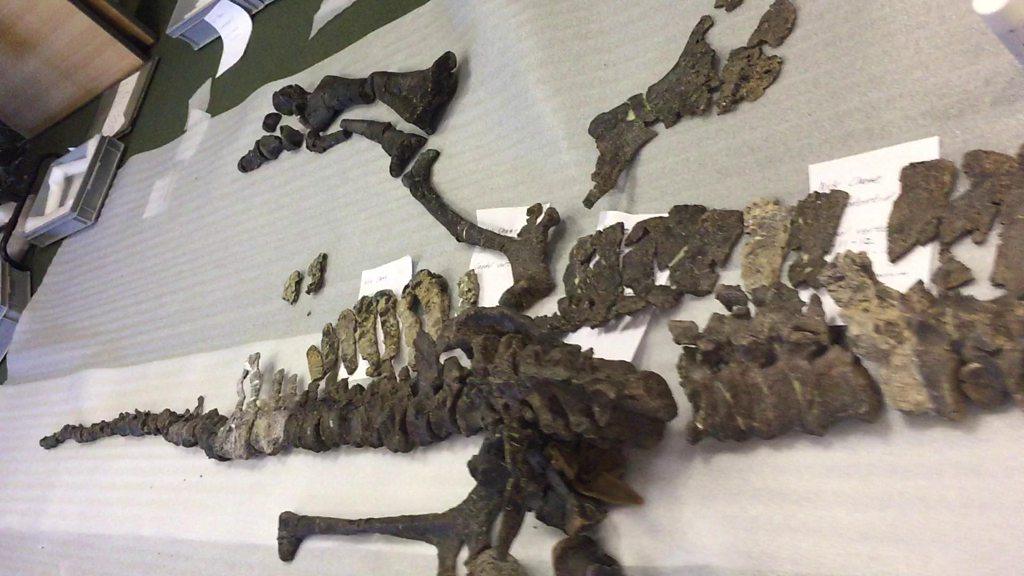Dinosaur footprints exposed on resort's beach

The footprints were laid bare during coastal flood checks by the Environment Agency
At a glance
The dinosaur footprints were uncovered at Yaverland, Isle of Wight
They were found on the seafront during excavations for sea defences
The remains are thought to be from a three-toed mantellisaurus
Fully-grown, it would have been almost twice the length of an average car
- Published
A set of well-preserved dinosaur footprints have been uncovered on a beach at a seaside resort.
The prints were found at Yaverland, Isle of Wight, by engineers looking at sea defence plans for the seafront.
They are thought to belong to a mantellisaurus, a three-toed, seven metre (23ft) long plant-eating dinosaur.
The Environment Agency said the fossils, dating back 125 million years, were exposed during excavation work near a beachside cafe, a car park and a bus stop.

The mantellisaurus skeleton on display at the Natural History Museum was found on the Isle of Wight in 1917
Dr Martin Munt, curator of the Dinosaur Isle Museum in Sandown, said: "The Isle of Wight is the richest dinosaur location in Europe, but this is still a wonderful find.
"We cannot be totally sure about a print's identity, but the three-toed feet makes it likely a mantellisaurus was here, not just in other parts of the south coast where they were more common - or that's what we thought until now."
The mantellisaurus skeleton on show at the Natural History Museum was found on the Isle of Wight in 1917. It is one of the most complete dinosaur skeletons in the UK.
The engineers who uncovered the footprints were on the beach site to work up plans for improved flood defences for more than 600 properties in Shanklin and Yaverland.
An online consultation , externaland several public events are being held to seek the views of residents on the options available for flood protection in the area.
Follow BBC South on Facebook, external, X, external, or Instagram, external. Send your story ideas to south.newsonline@bbc.co.uk, external.
Related topics
External internet links
- Published18 January 2017
